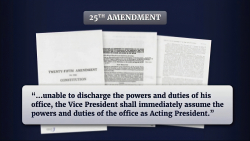Sweden’s Gripen E fighter successfully tested AI flight control, marking a major leap in autonomous air combat capabilities and showcasing rapid integration of advanced tech in Europe’s future defense strategy.
Last year, Swedish aerospace giant Saab confirmed that it was collaborating with artificial intelligence firm Helsing to enhance the capabilities of the JAS 39 Gripen E multirole fighter. The joint “Project Beyond” called for integrating Helsing’s AI directly into the Gripen’s core system, enabling the aircraft’s onboard computer to handle data processing, streamlining the pilot’s workload.
On Wednesday, it was announced that three Gripen E flights were successfully completed with the AI agent “Centaur” installed. The first test flight occurred on May 28. During the tests, the 4++ generation fighter handed off duties to the Centaur, with the AI platform then executing “complex maneuvers” in a Beyond Visual Range (BVR) combat environment and cued the pilot to fire.”
The test flights, which were conducted over the Baltic Sea, still had a human safety pilot onboard to take control if necessary. Centaur was still given command of the mission, where it could carry out threat tracking, planning, and maneuvering the aircraft as required.
During the third flight, conducted on June 3, the Centaur was pitted against a manned Gripen D, where the AI was provided with real-time sensor data, enabling it to track the other JAS 39 fighter in a series of Beyond Visual Range (BVR) scenarios.
“The team tested Centaur’s adaptability by varying starting distances, speeds, aspects, and even disabling C2 data to assess its robustness,” Saab explained.
“This is an important achievement for Saab, demonstrating our qualitative edge in sophisticated technologies by making AI deliver in the air,” said Peter Nilsson, head of Advanced Programmes at Saab’s Aeronautics Business Area.
“The swift integration and successful flight testing of Helsing’s AI in a Gripen E exemplifies the accelerated capability gain you can get from our fighter. We are excited to continue developing and refining how this and other AI agents can be used, while once again showing how our fighters will outperform faster than the opponent can evolve.”
AI-Enabled Fighter Jets Are the Future of Air Combat
The test pilot onboard the Gripen-E described the tests as “the future of air combat” in Europe and beyond.
“It took us less than half a year to go from defining the operational scenario, through configuring software interfaces and training, integrating, testing the agent, to lift off and test flight,” said Marcus Wandt, chief innovation officer and Saab test pilot. “This is a clear testament to the Gripen’s unique software architecture, the technical maturity of Centaur, as well as the close collaboration and proficiency of Saab and Helsing engineers.”
The Project Beyond team, supported by the Swedish Defence Material Administration (FMV) and part of the Swedish Concept program for Future Fighter Systems, has explored the trustworthiness of AI and will analyze the flight data from the recent test flights to train the system further and “enhance its BVR capabilities.” The companies will conduct additional flights throughout 2025 and beyond.
“These test flights mark a pioneering step in autonomous air combat and a turning point for the future of European defence,” said Stephanie Lingemann, senior director air domain at Helsing.
“We are proud to achieve this milestone with our strategic partner Saab, fusing advanced AI capabilities with Gripen’s state-of-the-art software architecture in record time. This highlights the fast capability gain that modern, software-defined defence can provide.”
Multiple Countries’ Fighter Jets Now Have AI Co-Pilots
The Saab JAS 39 Gripen E isn’t the first aircraft that could take advantage of AI capabilities. Russia has touted the AI functionality in its Sukhoi Su-57 fifth-generation stealth fighter. The Kremlin claims the AI systems act as a virtual co-pilot, gathering data from the aircraft’s numerous sensors, providing crucial information, and helping ensure faster decision-making for the pilots.
The US Air Force has also tested autonomous with its X62A VISTA (Variable In-flight Simulation Test Aircraft), a highly modified F-16 Fighting Falcon. Last year, then-Secretary of the Air Force Frank Kendall, the air service’s top civilian official, took to the skies in an AI-controlled fighter.
During the test, the AI maneuvered the aircraft and simulated an “engagement” against a manned F-16, piloted by an aviator with 2,000 to 3,000 hours of flight experience. Kendall described it as “roughly an even fight” and suggested that against a less experienced pilot, the “automation would have performed better.”
About the Author: Peter Suciu
Peter Suciu has contributed over 3,200 published pieces to more than four dozen magazines and websites over a thirty-year career in journalism. He regularly writes about military hardware, firearms history, cybersecurity, politics, and international affairs. Peter is also a Contributing Writer for Forbes and Clearance Jobs. He is based in Michigan. You can follow him on Twitter: @PeterSuciu. You can email the author: [email protected].
Image Credit: Shutterstock/Sanit Fuangnakhon.
















